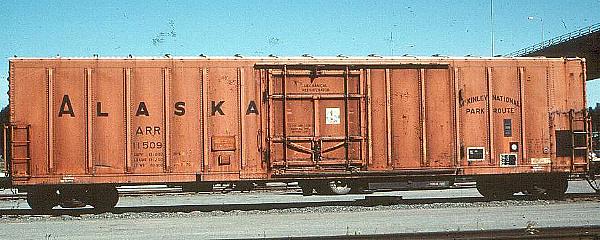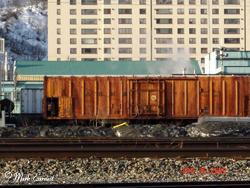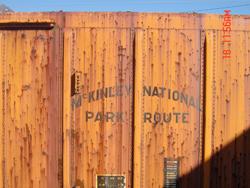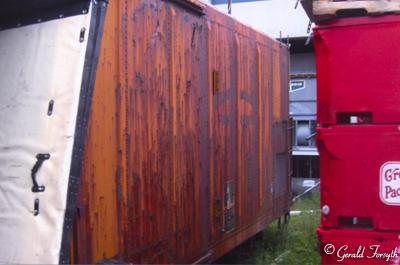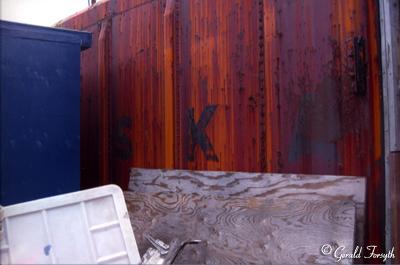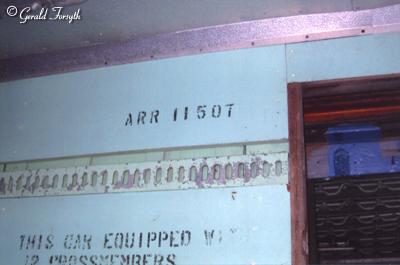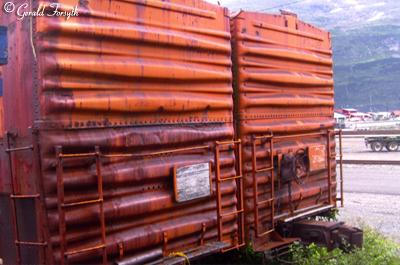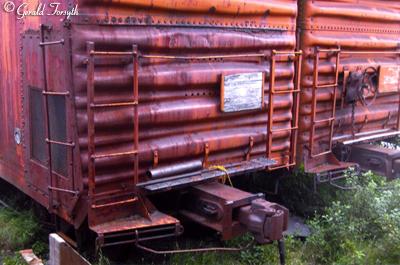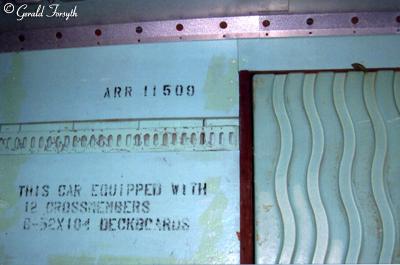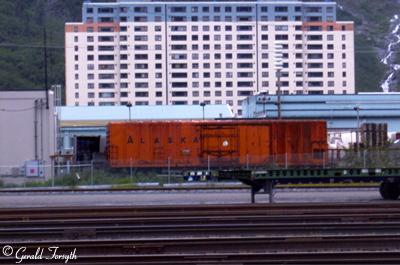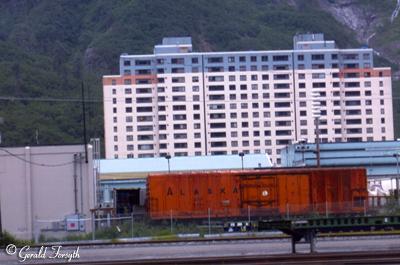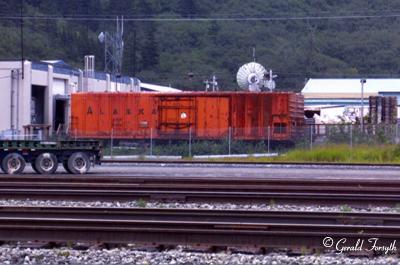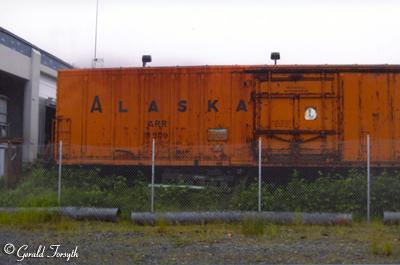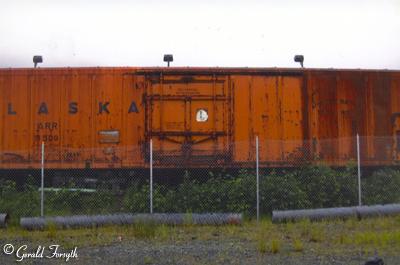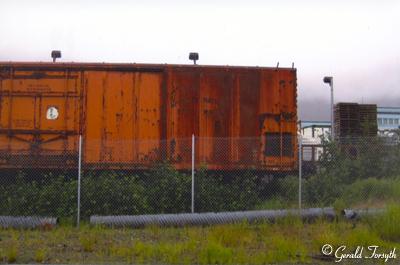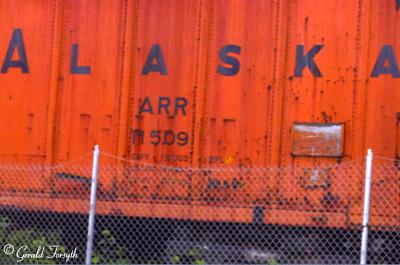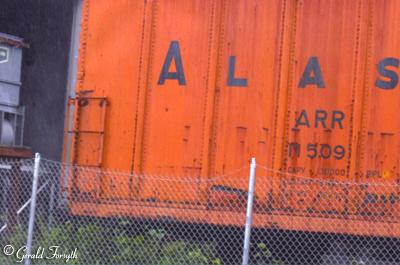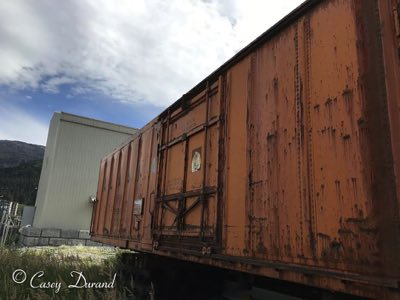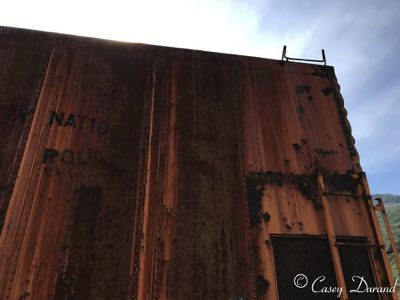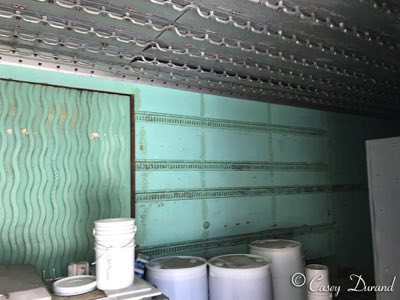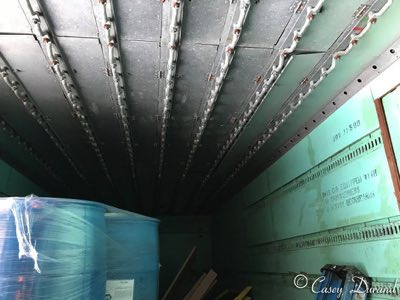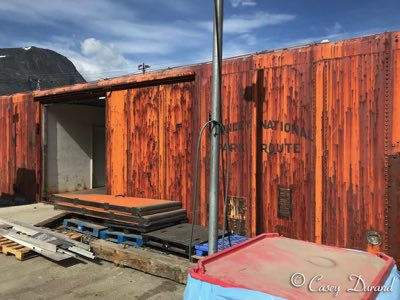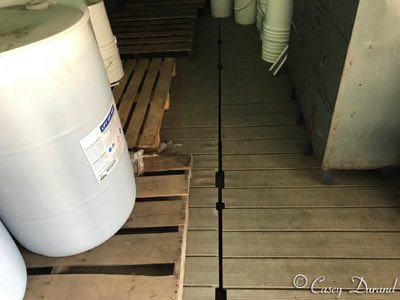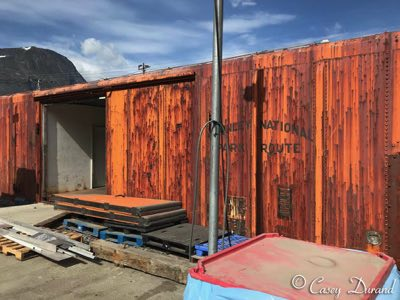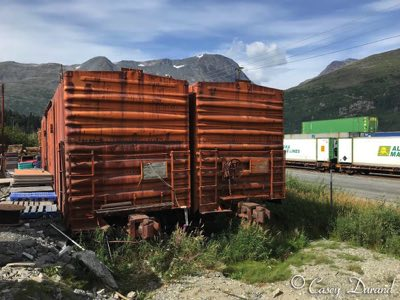History By the 1940's, new reefers were being built entirely of steel. Insulating techniques improved to the point where economical refrigeration could be accomplished using steel side plates in place of wood sheathing. Cars with steel roofs and sides were more durable and required fewer repairs. In general, steel cars replaced wood due to their strength and longevity. In the case of reefers, the better insulating quality of the wood was not an issue, as the steel cars continued to be wood lined (until urethane insulation replaced the wood). As late as August of 1957, ice was still used to keep railroad cars cold. But mechanical refrigeration-diesel powered units in each car soon took over. The "plug" door was introduced in the 1960's as an option that provided a larger door to ease loading and unloading of certain commodities. These tight-fitting doors were better insulated and could keep the car at a more even temperature. Truck deregulation, along with the emergence of intermodal, changed the transportation scenario for large perishable-products shippers. It was not the superior efficiency of the truck that killed the reefer (trucks are less efficient, which is why Tropicana stays with reefers) but its reliability. Railroads are notorious for losing cars and performing erratically in other respects. However, some companies retained mechanical reefers. Sunkist, one of the largest perishable products shippers in the country, moves roughly 80 percent of its freight by truck, 16 percent intermodally and the remainder by mechanical reefer car. Sunkist has maintained a 500-car-a-year reefer service for a few select customers, using a daily Burlington Northern Santa Fe train out of California's northern central valley and connecting with Conrail in Chicago. Amtrak's Mail and Express business is currently investing in mechanical reefers in an effort to become more truck competitive and expand upon their 1999 success. Amtrak will offer an express four-day, cross-country service for perishable goods with the purchase of a fleet of eight reefer units. Sunkist Growers Inc. has signed up for five of the cars and will start testing the service when Amtrak takes delivery of the equipment. The new 70-ton reefer cars will be rebuilt to allow them to be used on Amtrak's high-speed passenger trains. Sunkist will use two passenger trains to move citrus product to the East Coast: Amtrak's Southwest Chief, operating between Los Angeles and Chicago with cars connecting to and from Philadelphia; and between Los Angeles and Jacksonville, Fla., on Amtrak's Sunset Limited.
Overview
In 1966, the Alaska Railrod purchased 11 mechanical reefers from Pacific Car and Foundry. These 57 foot reefers were used to ship juice into Alaska and fish to the lower 48 states.. When they ended their useful life, most of the reefers had their roofs cut off, filled with scrap and sent south. Today, mechanical reefers have disappeared on the Alaska Railroad. One unit can still be seen in Whittier and is in use as a storage shed. Mechanical diagrams: Units in Whittier
There have been models made of these cars, most recently by Athearn. However, all of the models are of the more common 57' car.
Page created 2000 and last updated 1/13/20 |

